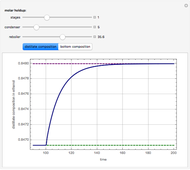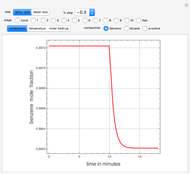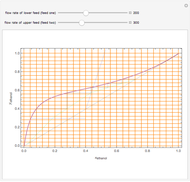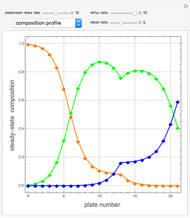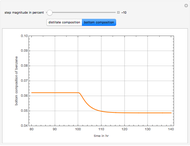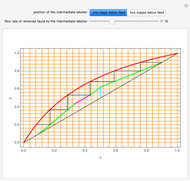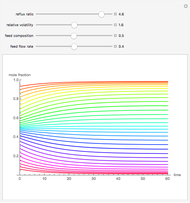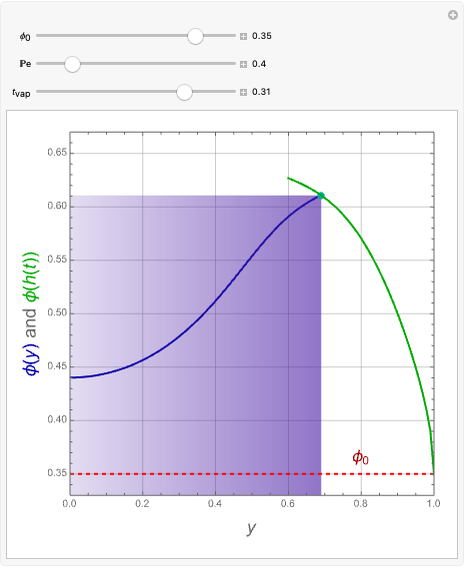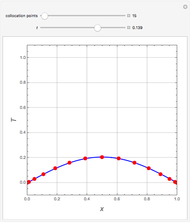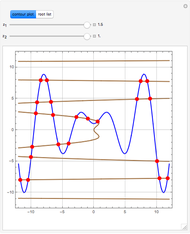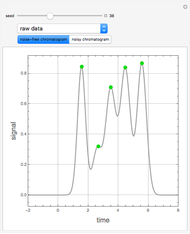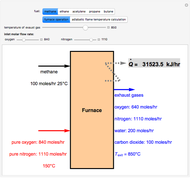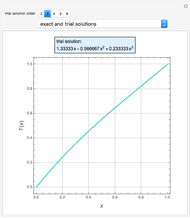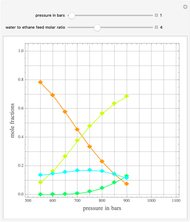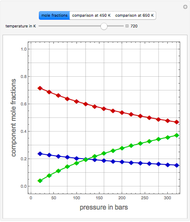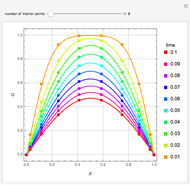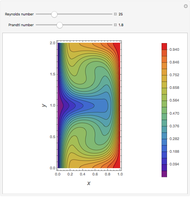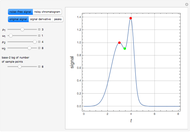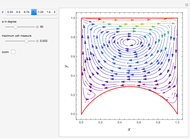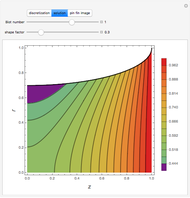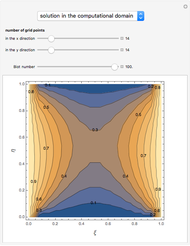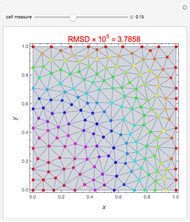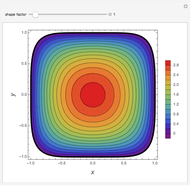Distillation Column Calculation Incorporating Pressure Drop Effect

Requires a Wolfram Notebook System
Interact on desktop, mobile and cloud with the free Wolfram Player or other Wolfram Language products.
Consider a distillation column separating a quaternary mixture of benzene, toluene,  -xylene, and ethylbenzene. This column has 10 stages, a total condenser, and a partial reboiler. The feed stage location is stage five counting from the top. The feed composition is 25 mole % for each of the four components. The feed quality is taken to be 1. The feed flow rate is set to 10 kmol/hr. The reboil and reflux ratios are both chosen to be 5.
-xylene, and ethylbenzene. This column has 10 stages, a total condenser, and a partial reboiler. The feed stage location is stage five counting from the top. The feed composition is 25 mole % for each of the four components. The feed quality is taken to be 1. The feed flow rate is set to 10 kmol/hr. The reboil and reflux ratios are both chosen to be 5.
Contributed by: Housam Binous, Naim Faqir, and Brian G. Higgins (November 2012)
Open content licensed under CC BY-NC-SA
Snapshots
Details
Expressions for pure component vapor and liquid enthalpies were adapted from Aspen HYSYS.
The mixture is assumed to obey Raoult's law since it is composed of four aromatic compounds at a moderate pressure.
Reference
[1] E. J. Henley and J. D. Seader, Equilibrium-Stage Separation Operations in Chemical Engineering, New York: Wiley, 1981.
Permanent Citation






